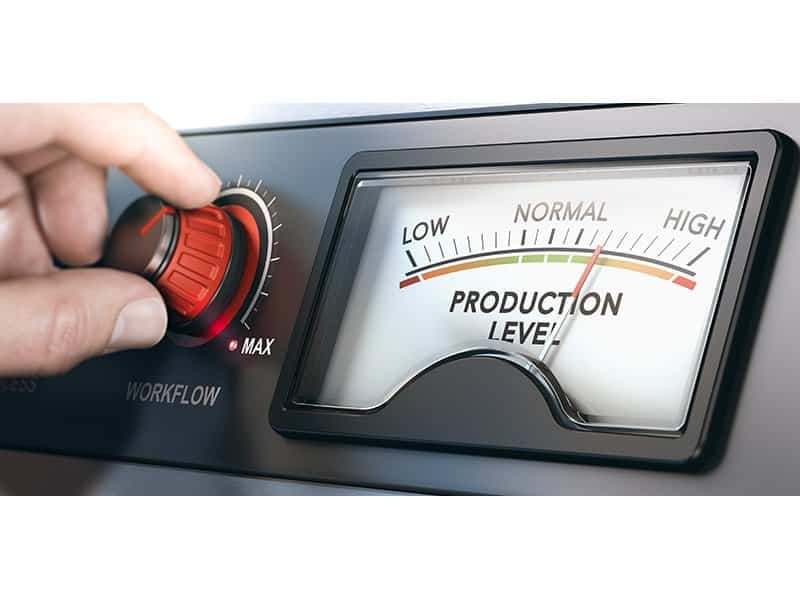An efficient workplace creates a well-oiled machine, so to speak, boosting your bottom line, and as a result the success of your business. Added time at work doesn’t always translate to accomplishing more. It’s what you do with the time you have that matters, and that is all about workflow efficiency.
You need everyone’s focus and productivity if you want to get anywhere. Despite this, less than five percent of companies claim they have a disciplined task process for knocking out priority projects. Ultimate productivity is not an easy thing to achieve, especially when many distractions linger around us.
Modern technology can help improve the performance of your workforce and team. This can be somewhat alarming considering mobile devices create many distractions.
-
Communication Software
Communication and collaboration tools such as Slack, Zoom and Tribe are incredibly beneficial to improving workflow efficiency. After all, without proper communication between teams, there’s no way to have a fully operational organization. In fact, companies with 100 employees lose an average of $420,000 per year simply because of miscommunication.
Don’t be part of that statistic. Deploy, train and regularly use communication tools to facilitate better collaboration and relationships across your teams.
-
Task Management Platforms and Software
Another platform that can boost productivity through collaboration is a task management system. Deployments like Basecamp, Asana and Wrike allow management teams to keep a watchful eye on all the projects in the pipeline. More importantly, they can provide more accurate direction during the development, as opposed to making costly corrections after something is finished.
Each platform offers its own set of benefits and strengths. Wrike, for example, is great for clueing in clients during the development process. You can favor ultimate transparency through the tool, allowing clients a peek at the inner workings of a project or task. They too can offer their own opinions and insights during the work phase, without hindering or slowing performance.
-
Time Tracking Software
Similar to old-school time clock systems, time tracking software will allow employees and workers to report their work sessions. More importantly, many of them — such as Hubstaff — allow you to see how productive each team member is with their time. You can even see what they are doing on the clock or with company-owned systems. If they’re visiting outside portals or third-party sites they shouldn’t be during work hours, you’ll know.
It’s about more than just the basic spying, however, as the goal is not to make anyone uncomfortable. Instead, you can use the insights gained by these tools to guide and direct your workforce in the appropriate ways.
Some examples, if you’re looking for them, include Toggl, RescueTime, Hubstaff and TimeBoy.
-
Enable Telecommuting
Rather than point out a specific tool or piece of software, this tip is about enabling telecommuting which is more of a method or strategy. Telecommuting or remote work systems, allow employees and personnel to login, clock-in or work from remote locations — such as a home office.
At first thought, this seems a little insane, except that many studies have shown remote workers tend to be more productive — up to 13 percent more to be exact. This is because it favors freedom of choice, but is also infinitely more convenient. A sick or ill employee that has the freedom to work from home, for instance, is more likely to do so than one that has to commute to work.
Of course, such a system involves many tools and software including, but not limited to, email, task management and time monitoring, open communication and administrative dashboards.
Embrace Technology to Move Forward
There are a ton of technology and software options to improve productivity and focus of your team(s). Keep in mind, this list is not comprehensive, either. If you’re prepared to dive in, you can find a lot more to support the boost in workflow efficiency both in and out of your office.
For good measure, start with the tools showcased here.
Summary:
How to Use Technology to Improve Your IT Team’s Workflow Efficiency
An efficient workplace creates a well-oiled machine, boosting your bottom line, and as a result the success of your business. You need everyone’s focus and productivity if you want to get anywhere. Despite this, less than five percent of companies claim they have a disciplined task process for knocking out priority projects. Ultimate productivity is not an easy thing to achieve, especially when many distractions linger around us. Modern technology can help improve the performance of your workforce and team. 1. Communication Software: Communication and collaboration tools such as Slack, Zoom and Tribe are incredibly beneficial to improving workflow efficiency. 2. Task Management Platforms and Software: Another platform that can boost productivity through collaboration is a task management system. Deployments like Basecamp, Asana and Wrike allow management teams to keep a watchful eye on all the projects in the pipeline. 3. Time Tracking Software: Similar to old-school time clock systems, time tracking software will allow employees and workers to report their work sessions. 4. Enable Telecommuting: Rather than point out a specific tool or piece of software, this tip is about enabling telecommuting which is more of a method or strategy. Telecommuting or remote work systems, allow employees and personnel to login, clock-in or work from remote locations — such as a home office. 5. Embrace Technology to Move Forward.”
